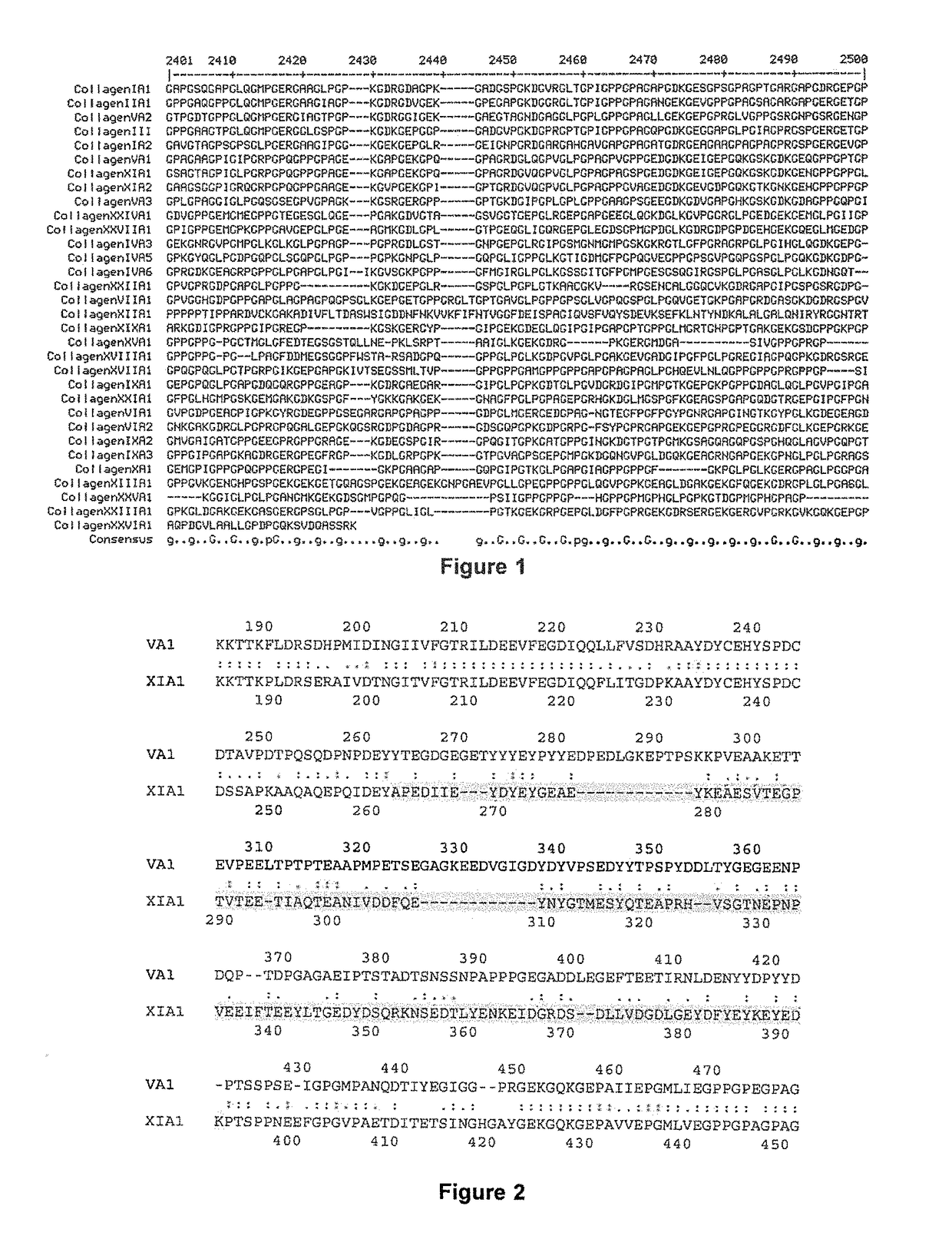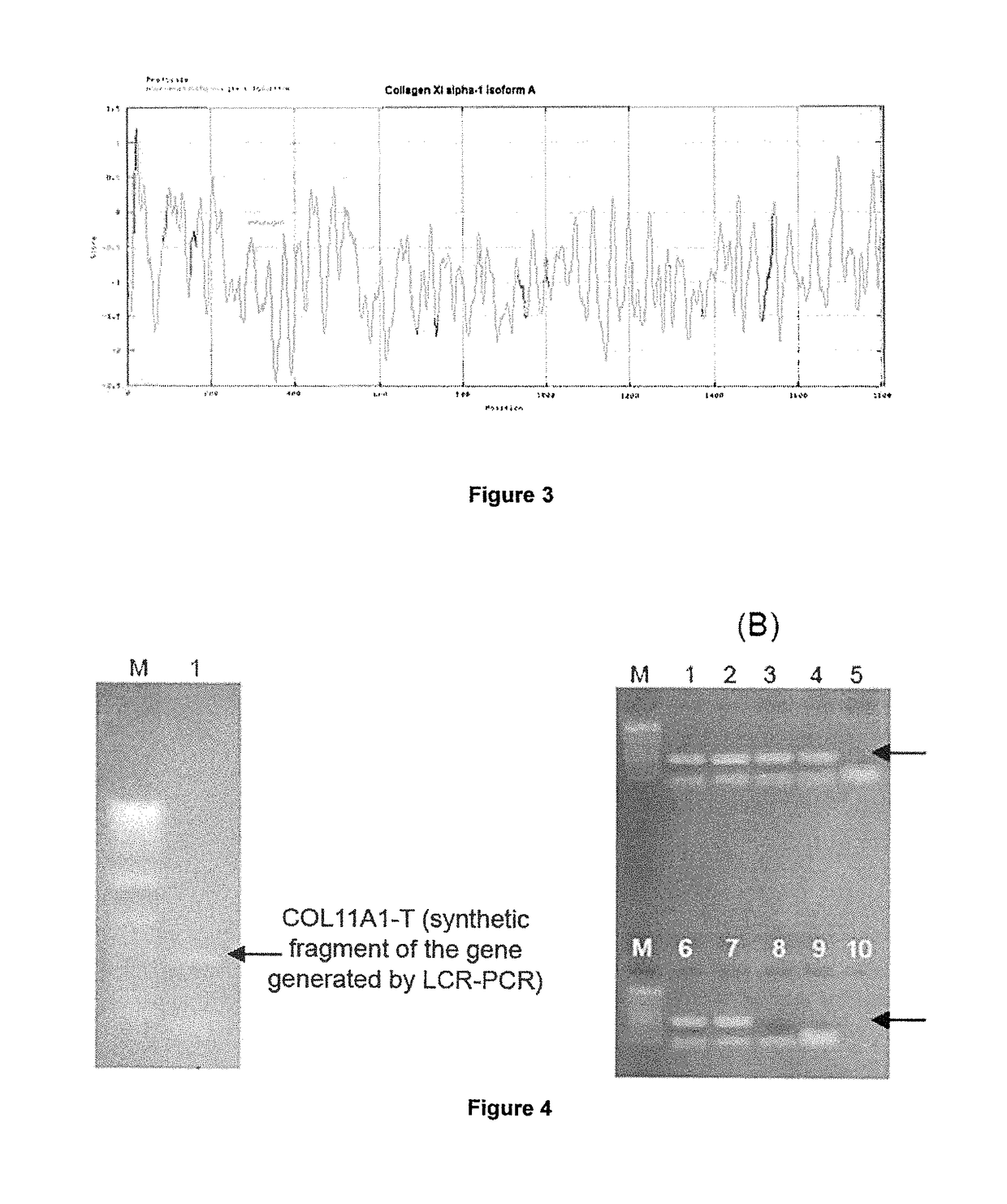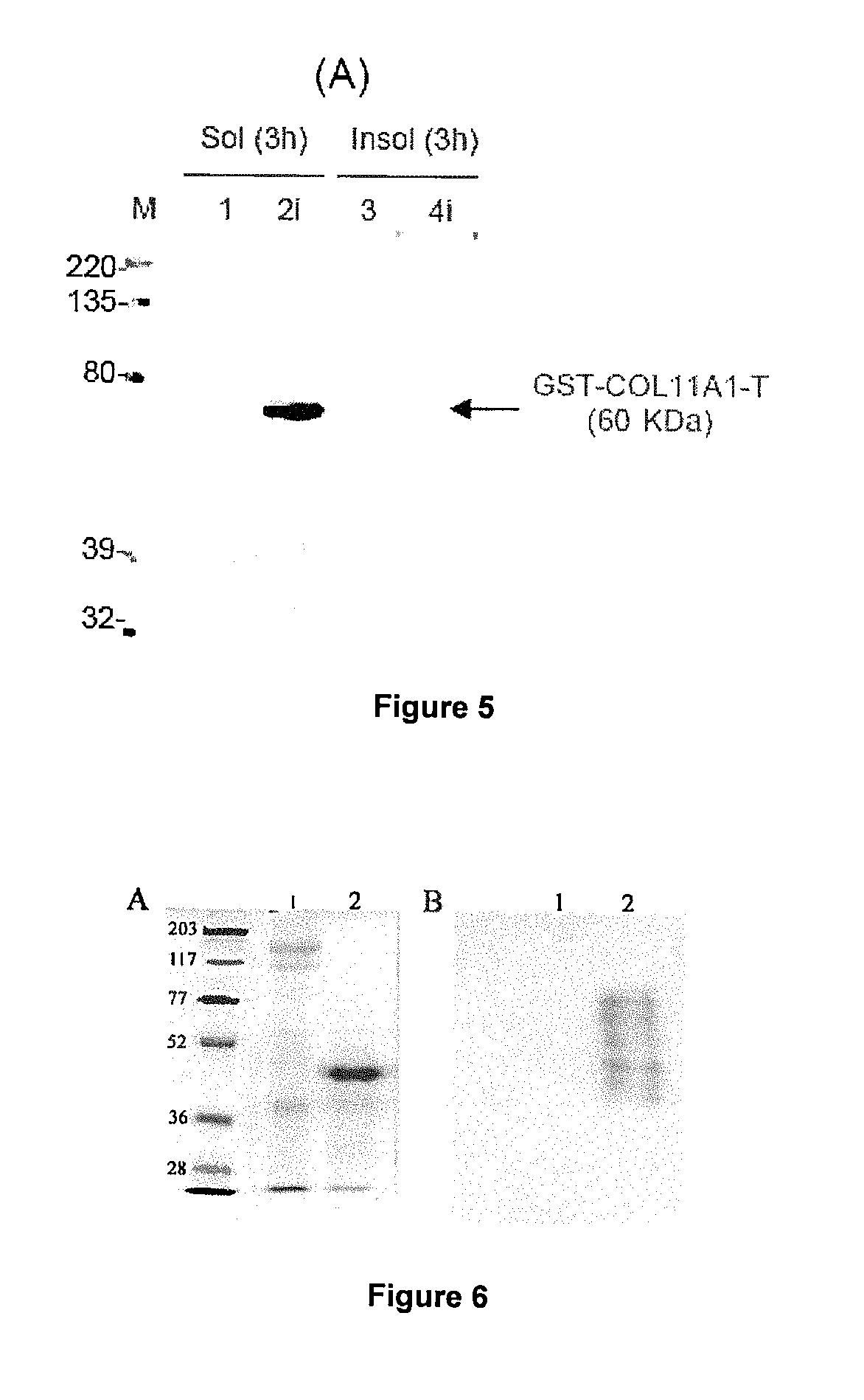Methods and products for in vitro diagnosis, in vitro prognosis and the development of drugs against invasive carcinomas
a technology of in vitro prognosis and in vitro treatment, which is applied in the direction of material testing goods, biochemistry equipment and processes, instruments, etc., can solve the problems of homogeneous pancreatic cancer, difficult diagnosis in an initial phase, and few advances in the development of new methods for the diagnosis or treatment of advanced and invasive stages of the disease, etc., to achieve high sensitivity, high sensitivity and specificity
- Summary
- Abstract
- Description
- Claims
- Application Information
AI Technical Summary
Benefits of technology
Problems solved by technology
Method used
Image
Examples
example 1
Differential Analysis of col11a1 Gene Expression in Kidney Tissue Samples Using Human Genome U95 DNA Arrays Microarrays
1.1 Materials and Methods
Microarrays.
[0274]GeneChip Test 3 microarrays (Affymetrix, Santa Clara), which allow analyzing the quality of RNA, prior to expression analysis with the GeneChip Human Genome U95A microarray (Affymetrix, Santa Clara), which represents 12,000 complete sequences of annotated genes, were used; Collagen XI, alpha 1 (col11a1) gene is represented in the microarray by the set of Affymetrix 37892_at probes, which are sense oligonucleotides 25 nucleotides long, designed based on the Unigene Hs.82772 or GeneBank J04177 sequence.
Samples.
[0275]The analysis was carried out with total RNA from 1 neoplastic kidney tissue sample from 1 individual who has renal oncocytoma, with equimolar mixtures (pools) of total RNAs from a set of 8 neoplastic kidney tissue samples from 8 individuals who have renal carcinoma conventional, with total RNA from 1 neoplastic ki...
example 2
Differential Analysis of col11a1 Gene Expression in Pancreatic Tissue Samples Using Human Genome U133 DNA Arrays
2.1 Materials and Methods
Microarrays.
[0293]GeneChip Test 3 microarrays (Affymetrix, Santa Clara) were used, which allow analyzing the quality of RNA, prior to expression analysis with GeneChip Human Genome U133A microarray (Affymetrix, Santa Clara), which represents 15,000 complete sequences of annotated genes and 7,000 expressed gene sequences without annotation (ESTs or expressed sequence tags); Collagen XI, alpha 1 gene (col11a1) is represented in the microarray by the set of Affymetrix 37892_at probes, which are sense oligonucleotides 25 nucleotides long, designed based on the Unigene Hs.82772 or GeneBank J04177 sequence.
Samples.
[0294]The samples studied were from biopsies, obtained by surgical resection, from (1) control subjects without pancreatic ductal adenocarcinoma (n=1), (11) apparently non-tumorous (‘healthy’) pancreatic tissue from individuals who had pancreat...
example 3
Differential Analysis of col11a1 Gene Expression in Bladder Tissue Samples Using Human Genome U95 DNA Arrays
3.1 Materials and Methods
Microarrays.
[0320]GeneChip Test 3 microarrays (Affymetrix, Santa Clara), which allow analyzing the quality of RNA, prior to analysis with the GeneChip Human Genome U95A microarray (Affymetrix, Santa Clara), which represents 12,000 complete sequences of annotated genes, were used; col11a1 gene is represented in the microarray by the set of Affymetrix 37892_at probes, which are sense oligonucleotides 25 nucleotides long, designed based on the Unigene Hs.82772 or GeneBanK J04177 sequence.
Samples.
[0321]The samples studied were from biopsies, obtained by transurethral surgical resection, from (i) control subjects without transitional bladder carcinoma (n=7), and (ii) patients who were clinically typed after resection and who had transitional bladder carcinoma (n=22) in one of the following stages: low grade tumors respecting the lamina propria (Ta G1), high...
PUM
| Property | Measurement | Unit |
|---|---|---|
| molecular weight | aaaaa | aaaaa |
| pH | aaaaa | aaaaa |
| total volume | aaaaa | aaaaa |
Abstract
Description
Claims
Application Information
 Login to View More
Login to View More - R&D
- Intellectual Property
- Life Sciences
- Materials
- Tech Scout
- Unparalleled Data Quality
- Higher Quality Content
- 60% Fewer Hallucinations
Browse by: Latest US Patents, China's latest patents, Technical Efficacy Thesaurus, Application Domain, Technology Topic, Popular Technical Reports.
© 2025 PatSnap. All rights reserved.Legal|Privacy policy|Modern Slavery Act Transparency Statement|Sitemap|About US| Contact US: help@patsnap.com



